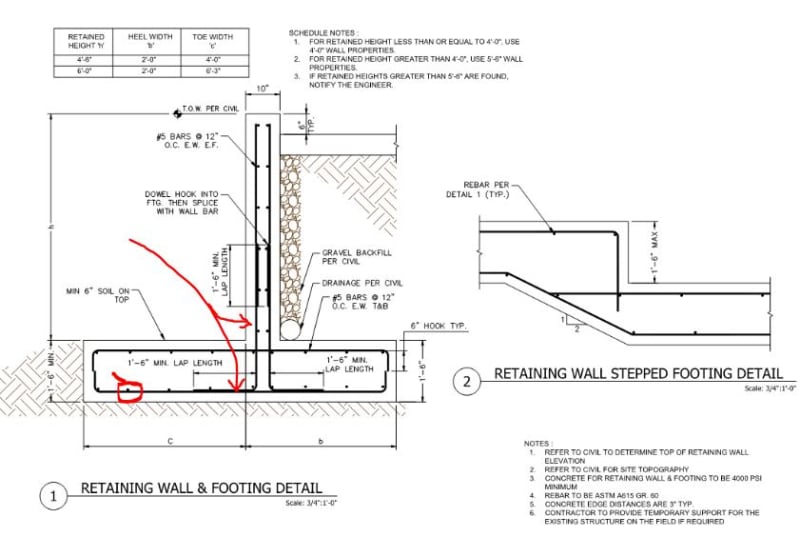Hello,
I have recently designed a pier/footing to support a cantilevered light pole. There is a small moment carried through the anchor bolts (Mf <100 kN*m). The subcontracted rebar supplier did not follow my design schedule and details regarding the hook development across the footing-pier construction joint, similar to the detail attached (ref: quick google search).
I circled the longitudinal bar and pointed to the vertical dowel, both in red. Should that dowel tuck underneath the bottom-upper layer (circled)? That seems like the most appropriate construction detail but the rebar detailer stated it to be irrelevant. Rather they seated the dowels on top of the bottom mat entirely. Ultimately, I don't believe there will be any repercussions either way as the loads are quite small, I was just satisfying my curiosity regarding industry/construction standards. Thoughts?

I have recently designed a pier/footing to support a cantilevered light pole. There is a small moment carried through the anchor bolts (Mf <100 kN*m). The subcontracted rebar supplier did not follow my design schedule and details regarding the hook development across the footing-pier construction joint, similar to the detail attached (ref: quick google search).
I circled the longitudinal bar and pointed to the vertical dowel, both in red. Should that dowel tuck underneath the bottom-upper layer (circled)? That seems like the most appropriate construction detail but the rebar detailer stated it to be irrelevant. Rather they seated the dowels on top of the bottom mat entirely. Ultimately, I don't believe there will be any repercussions either way as the loads are quite small, I was just satisfying my curiosity regarding industry/construction standards. Thoughts?

